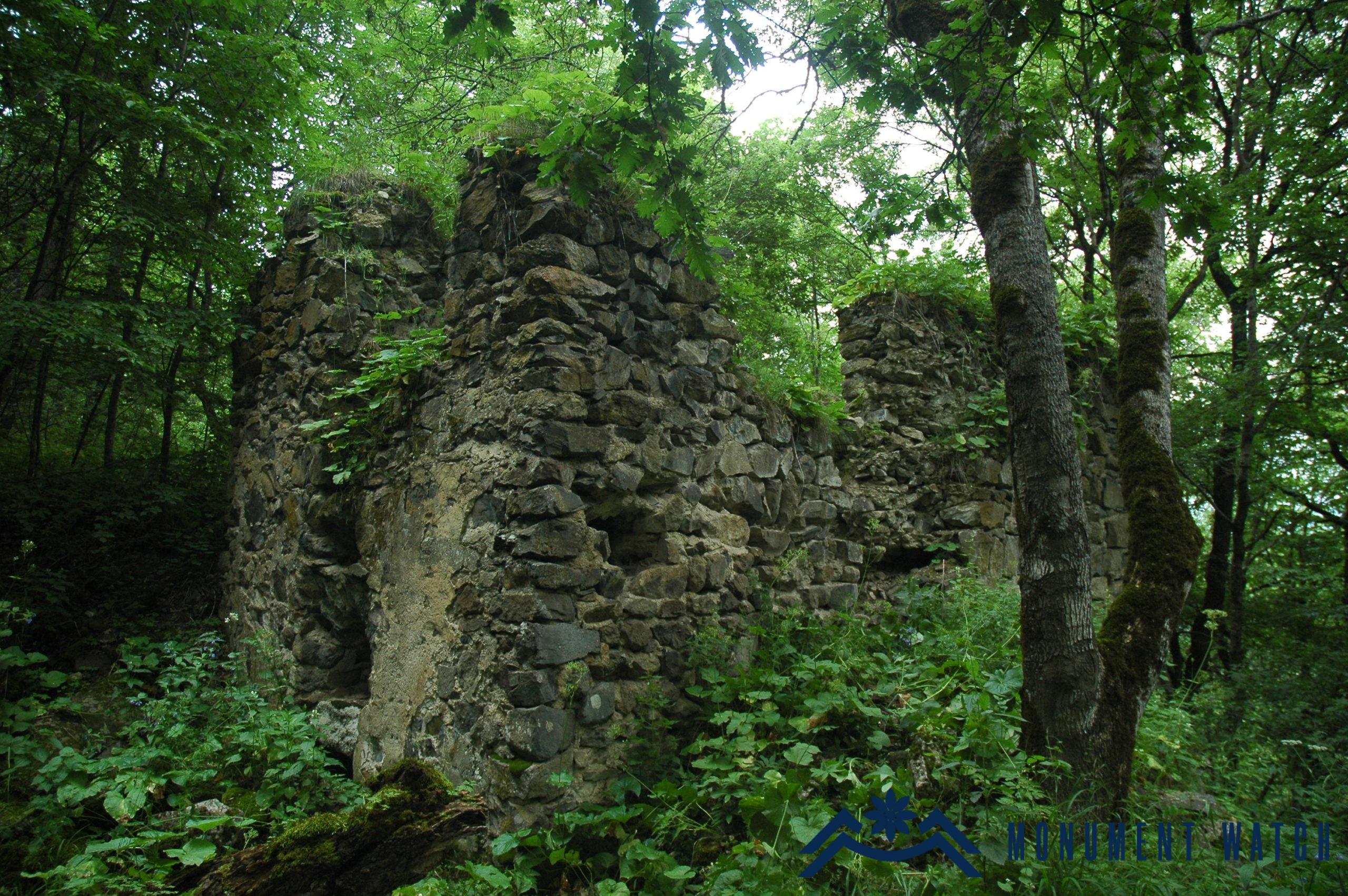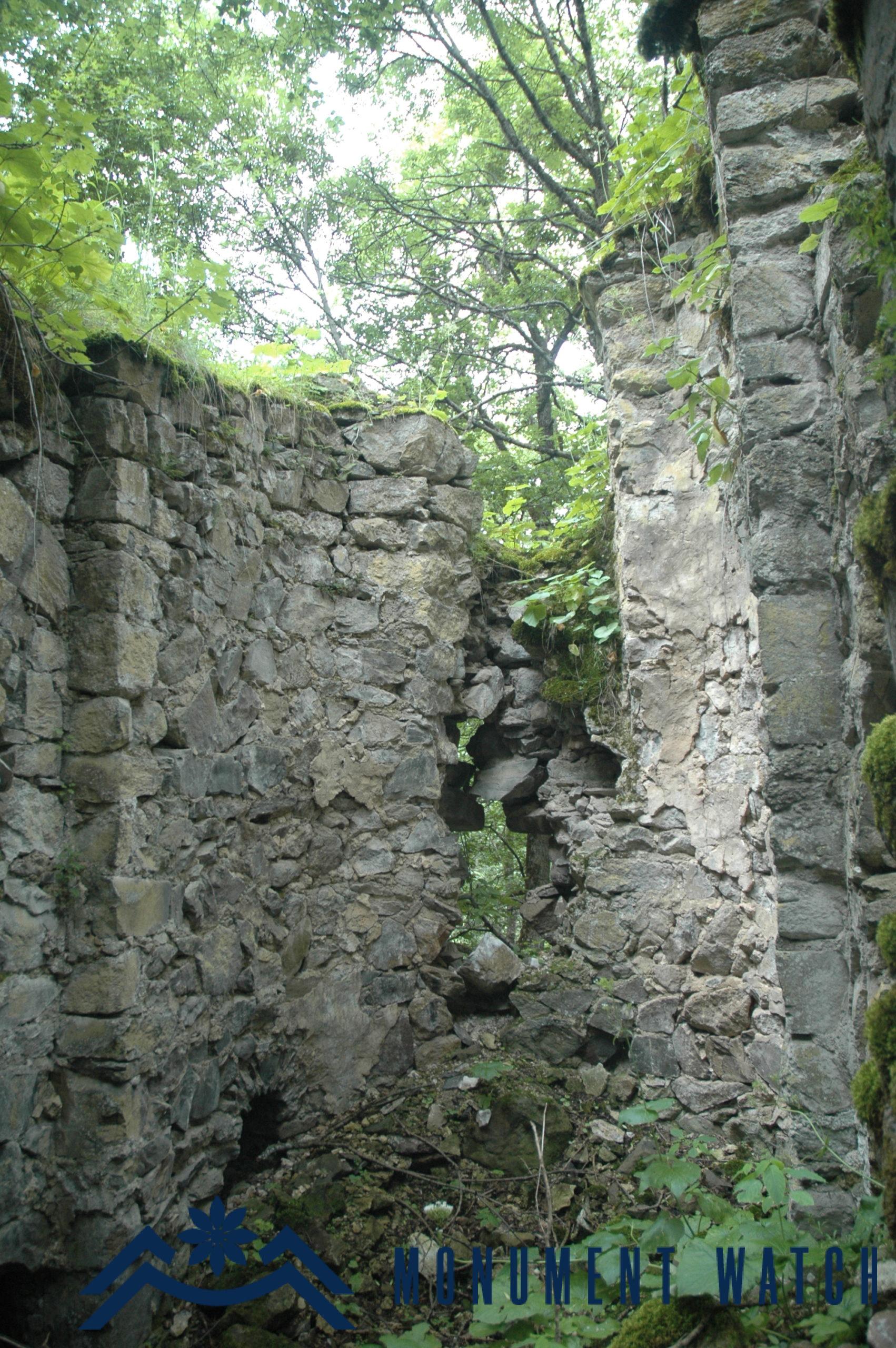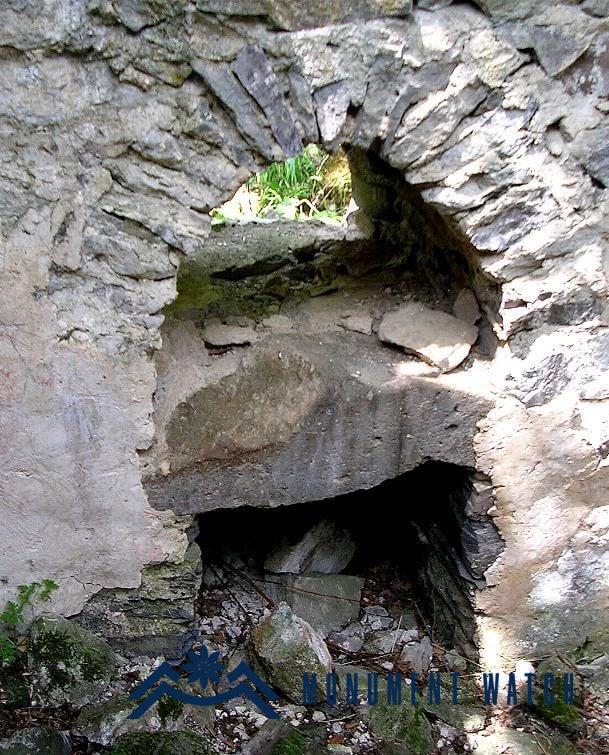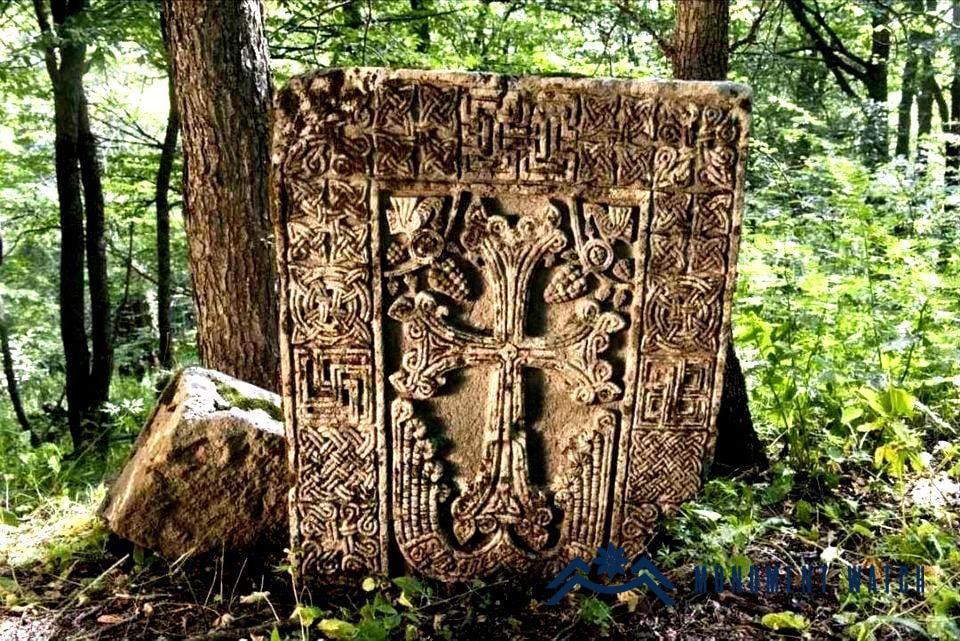Aghbradzor “Mayrejri Vank՛՛ monastery
Location
The monastery of Mayrejur is located in the Qashatagh region of the Artsakh Republic, to the right of an elevated section of the Arakhish tributary valley of the Shalva rivulet. It is 1850 meters above sea level. The monastery is located close to the medieval settlement of Aghbradzor, from which it derived its second name (Fig. 1).


Fig. 1 The general view of Aghbradzor (Mayrajur), photo by H. Petrosyan.
Historical overview
The monastery's history most likely dates back to the 11th century. The architectural-compositional examination of the monument, khachkars, and tombstones with inscriptions found in the area attest to this. The monastery is identified as the Mayrejur, which historian Samuel Anetsi mentions as the location from which Lord Oshin moved to Cilicia (Hakobyan 2009, 227). Later, the monastery continued to function as one of Dizak's spiritual centers (Fig. 2).
Architectural-compositional examination
The monastery of Mayrejur, or Aghbradzor, had a rock fence, with some wall sections preserved. The church is small in size and dates from the 11th century. It is a vaulted single-nave hall with slender walls and a horseshoe-shaped tabernacle. There are windows on the left and right sides of the tabernacle, one on each side. It is constructed of unpolished stones and lime mortar. The church's inner dimensions are 420 cm long and 220-240 cm wide. The tabernacle has a 200-centimeter aperture and a depth of 215 cm. The construction has a single preserved entrance (Fig. 3) with a 75 cm opening on the west side (Hakobyan 2020, 250).

Fig. 2 The tabernacle of the church from the inside, photo by H. Petrosyan.

Fig. 3 The entrance of the church from the inside, photo by Z. Rkoyan.
The interior of the church has been plastered. The structure's vault and some of its walls have collapsed. As a result, the areas near the ground are obscured. The medieval cemetery is located 150 meters from the church.
In the monastery and cemetery areas, there are several notable khachkars and tombstones, some of which have inscriptions. On one of the khachkars, it is written, "May God have mercy on Spat and his parents, and those reading, remember us in your prayers." and under the cross, it is written in four lines: "I, Sargis, raised this cross in 1075." (Hakobyan 2009, 225).
In another instance, the inscription is written in two parts on the khachkar's pedestal, and the inscription identifies the khachkar and the pedestal by the protrusion of the khachkar and the pit of the pedestal. The khachkar and the pedestal are separated. The khachkar reads, "It was 1069 in Armenia; I, Grigor, lord of the lords, son of the Atr," and the pedestal reads, "My master and vardapet Sostenes quit the worldly life for the sake of Christ." I, his nephew, raised this sacred sign in prayer to God on behalf of the holy patriarch, Amen” (Hakobyan 2020, 251). The khachkars are from the Ani school of architecture and clearly demonstrate the Bagratuni kingdom's political and cultural ties in the region until the middle of the 11th century (Figs. 4, 5, 6).

Fig. 4 A khachkar with an inscription, 11th century, photo by Z. Rkoyan.

Fig. 6 A khachkar, 11th century, photo by Z. Rkoyan.

Fig. 5 A khachkar with an inscription, 11th century, photo by Z. Rkoyan.
The condition before and after the war
The Monastery of Mayrejur was not changed significantly before or after the war.
Bibliographic examination
In his works, Alexan Hakobyan described the monastery in depth, referring to the monastery's history and memories. The khachkars and tombstones of the area and cemetery were thoroughly examined (Hakobyan 2009, 224-227, Hakobyan 2020, 250 –272).
Bibliography
- Hakobyan 2009-Hakobyan A., The newly discovered lithographs of the Hakari valley B //Near and Middle Eastern countries and nations, volume 27, Yerevan.
- Hakobyan 2020-Hakobyan A., Dynasties in Caucasian Albania and Eastern Armenia from ancient times to the thirteenth century, Yerevan.
Aghbradzor “Mayrejri Vank՛՛ monastery
Artsakh